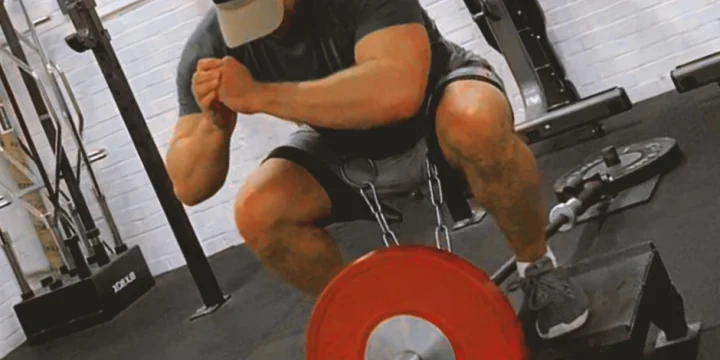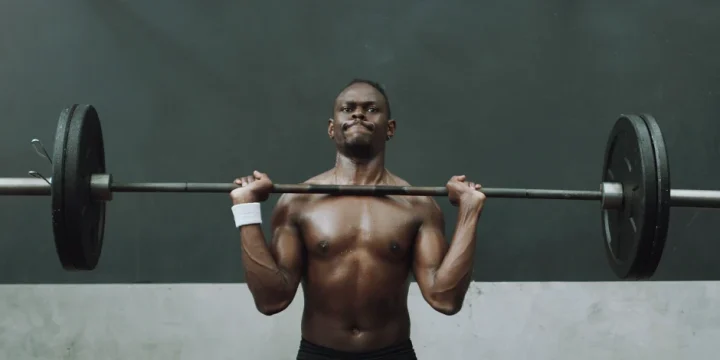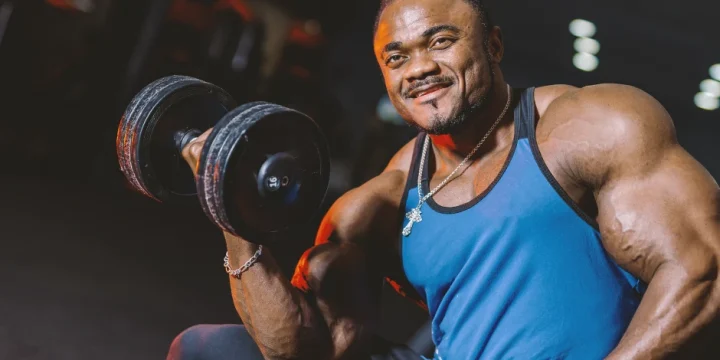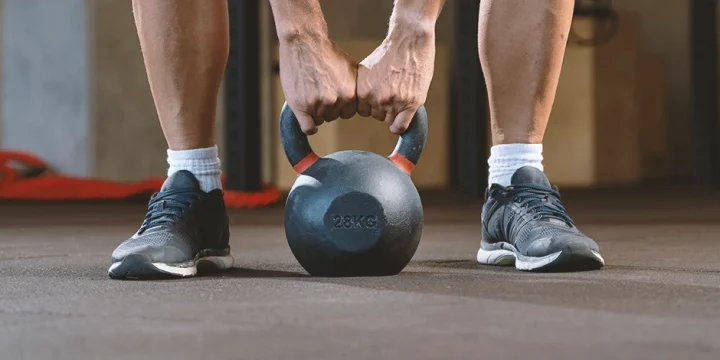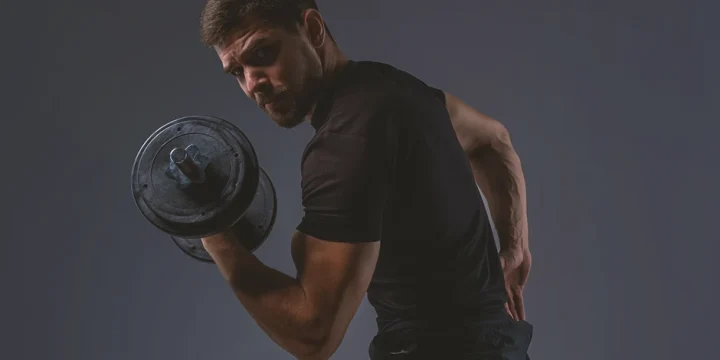Two exercises stand out for building a solid core: crunches and planks. Both are popular and effective at building core strength and toning your abdominal muscles.
With over a decade in the fitness industry, I have participated in countless debates. But which one is truly better? I checked what scientific studies have to say and talked with other fitness experts.
In this article, I’ll compare the benefits and drawbacks of both exercises so you can decide which comes out on top in the crunches vs. planks debate.
Quick Summary
- While crunches specifically target the rectus abdominis for a 'six-pack' look, planks provide a more comprehensive workout engaging multiple muscle groups.
- To build a solid core, planks and crunches are key exercises, each offering unique benefits for core strength and abdominal toning.
- Scientists have calculated that it would take approximately 250,000 crunches to burn a pound of fat.
- Personally, I find planks to be more beneficial for overall core strength and stability, making them a superior choice for a well-rounded fitness regimen.
Crunches vs. Planks: Which One Is Better?

Both crunches and planks are effective exercises to build a stronger core, but which is better depends on your fitness goals.
Let’s take a closer look.
Crunches
Crunches are an isotonic core exercise, meaning the muscles lengthen and shorten against resistance through a range of motion.
From my experience, crunches have been a game-changer in my core workouts. I've found them to be highly effective for targeted ab strengthening.
If your sole focus is strengthening and toning your abs, crunches may be a better option, as they primarily target the rectus abdominis.
How to Do Them
In my routine, I focus on breathing during crunches – inhaling as I lower and exhaling on the lift. It's a small detail that made a big difference in my workouts.
Follow these steps:
- Lie on your back. Have your knees bent and your feet flat on the floor.
- Place your hands behind your head.
- Tighten your abs, exhale, and lift your upper back, shoulders, and head off the ground, ensuring you use your abs, not your hands or neck.
- Once you’ve raised your body, squeeze your core muscles and hold for a few seconds.
- Slowly lower your upper body back down towards the mat.
- Repeat for the desired repetitions appropriate for your ability and fitness level.
Muscles Worked
Crunches primarily work the rectus abdominis, which according to a study in the National Library of Medicine, is the long, flat muscle that extends from your pubic bone to your ribcage and is responsible for creating the visible “six-pack” abs muscle look [1].
However, crunches also burn fat and work the entire core, including the oblique muscles and the transverse abdominis, the deepest layer of the abs. Additionally, crunches can engage the hip flexors, neck, and back muscles.
Proper form will ensure the intended muscles are engaged and avoid a neck or back strain.
“Abdominal muscles allow movement and provide stability, support and balance. Strong abs can prevent back pain and other problems.”
- Arlene Semeco, MS, RD
Planks
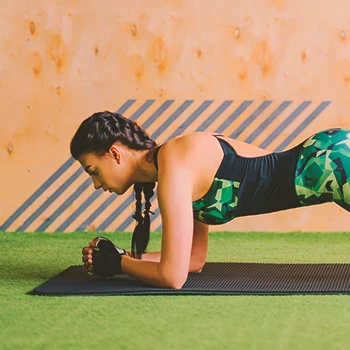
Planks are an isometric exercise where the muscles remain contracted while you are in a static position.
Planks are a great option if you are looking for a low-impact exercise that works multiple muscles and can improve overall core stability, posture, and endurance.
How to Do Them
Repeat this exercise for 2-3 sets, gradually increasing your holding time with each set.
Planks are a challenging fat burning workout, so you may only be able to keep the position briefly. Over time, you’ll be able to hold for longer periods and improve your core strength.
Follow these steps:
- Start by getting into a push-up position with your stomach and chest flat on the floor.
- Place your elbows directly under your shoulders; your feet should be hip-width apart; and your body should be straight from your head to your feet.
- Lift your body off the ground. Push yourself up by straightening your arms and keeping your forearms and palms on the floor.
- You should be supporting your body weight on your forearms and toes.
- Tighten your abs and glutes to keep your body straight from your head to your heels.
- Avoid lifting your hips too high or letting them sag too low.
- Hold for 30 seconds to one minute, keeping your core tight and breathing steady.
- Lower your body back to the ground: Slowly lower your body back to the ground, starting with your knees and then your chest.
Muscles Worked
Through planks, I've strengthened not just my core but also my arms and legs. It's a full-body benefit I swear by.
Unlike other core exercises, planks work the entire body, making them a highly effective exercise to strengthen the abdominal wall and other muscles in the arms, legs, and back.
Crunch Variations
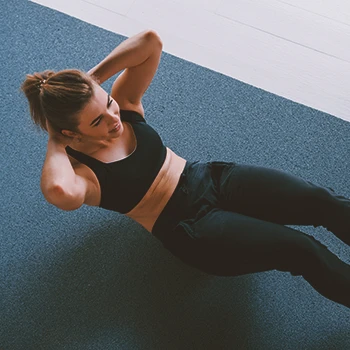
Here are brief descriptions of some common crunch variations:
- Bicycle crunches: During this exercise, you touch your bent knee with the opposite elbow in a twisting motion as if you’re riding a bicycle alternately. I found the twisting motion really amps up the core workout.
- Reverse crunches: Reverse crunches work the lower abs more than traditional crunches; draw your knees toward your chest while lifting your hips and buttocks.
- Cross crunches: While lying down, bring the elbow of one arm up to the opposite knee, keeping the other arm straight and the knee bent.
Plank Variations
Various types of plank exercises can add more challenge or variation to your workout routine.
Here are a couple of different plank variations:
- Side Plank: In this variation, instead of a traditional plank, you lie on one side and raise your body off the ground using your forearms and feet. This variation focuses more on working the obliques.
- Reverse Plank: In this variation, you sit on the floor with your legs extended, then place your palms behind you and lift your hips towards the ceiling to make a straight line from head to feet.
Incorporating Planks and Crunches into Various Workout Regimes
Planks and crunches are incredibly versatile exercises that can be seamlessly integrated into various workout regimes.
- HIIT: In HIIT, planks and crunches can be used as part of the high-intensity intervals or during the rest periods for active recovery. Similarly, crunches can be interspersed with exercises like jump squats to keep the core engaged throughout the workout.
- Yoga and core work: In yoga, planks are already a staple, often seen in forms like Chaturanga Dandasana. Adding a series of crunches or bicycle crunches at the end of a yoga session can further strengthen the abdominal muscles.
- Strength training synergy: Implementing these exercises as part of the warm-up routine or as a superset with weightlifting exercises can increase core stability and strength, leading to better overall lifting performance.
- Endurance sports enhancement: Endurance athletes, such as runners and cyclists, can benefit greatly from a strong core. Incorporating planks and crunches into training routines can improve posture, balance, and efficiency in their respective sports.
Impact on Posture and Daily Activities
Regularly performing planks and crunches can lead to significant improvements in daily activities. A strong core reduces the risk of back pain, which is often a result of weak abdominal muscles.
By strengthening the core, planks and crunches can alleviate and prevent lower back pain. A strong core ensures that the spine is well-supported, reducing the strain on the back muscles and the spine itself.
Finally, a strong core, developed through these exercises, also contributes to better balance and stability. This is particularly beneficial for older adults, as it can reduce the risk of falls and injuries.
FAQs
How Long Should I Hold a Plank?
You should hold a plank for 10–30 seconds for two to three sets. You can gradually increase the time as you get stronger, up to two minutes.
How Many Crunches Should I Do?
How many crunches you should do depends on your ability and fitness level. However, to strengthen your abs, begin with three sets of 12–20 reps.
References:
- https://www.ncbi.nlm.nih.gov/books/NBK537153/
About The Author
You May Also Like
